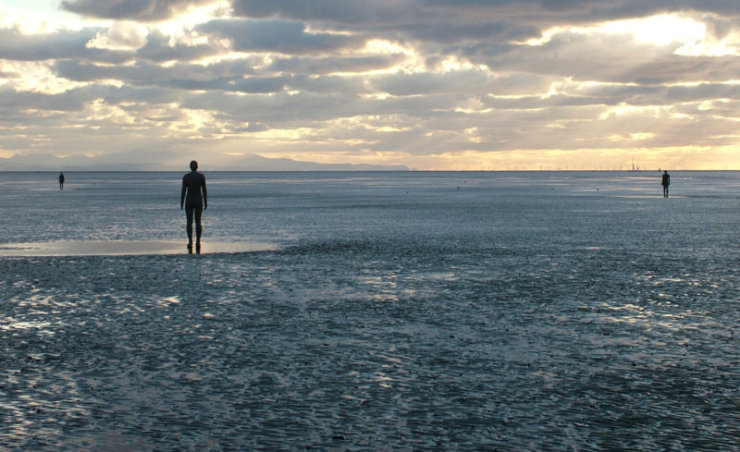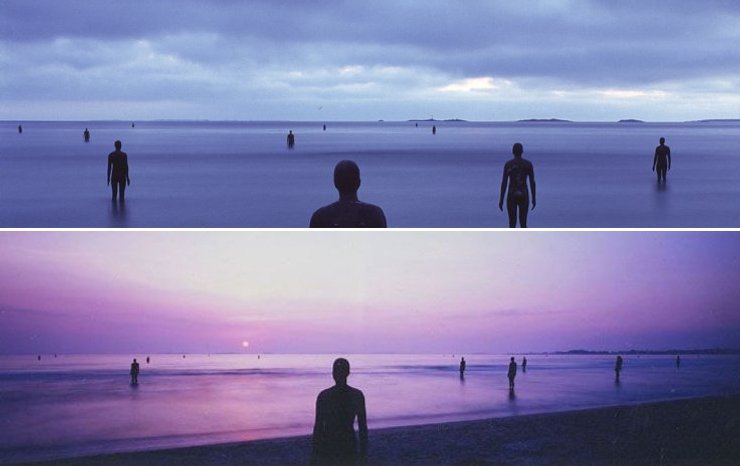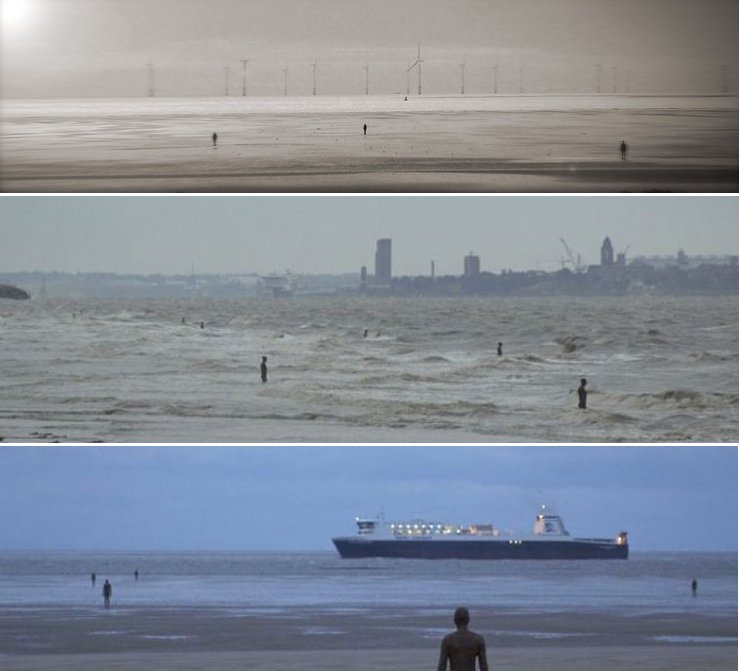
I stumbled upon these older but eerily fascinating works by artist Antony Gormley. The addition of the figures somehow make the landscape more desolate. Perhaps it's the initial feeling of accompaniment, then an onset of greater emotional isolation when the stark motionless and lifelessness of the bodies is realized. It also reminds me a bit of Frank Gaylord's statues at the Korean War Veteran's Memorial.
From the original proposal for the Wattenmeer, Cuxhaven.
To install a hundred solid cast iron bodyforms along the coast to the west and south of theKugelbake. The work will occupy an area of 1.75 square kilometers, with the pieces placed between 50 and 250 meters apart along the tideline and one kilometer out towards the horizon, to which they will all be facing. Depending on the fall of the land, the state of the tide, the weather conditions and the time of day the work will be more or less visible. The sculptures will be installed on a level plane attached to two-meter vertical steel piles. The ones closest to the horizon will stand on the sand, those nearer the shore being progressively buried. At high water, the sculptures that are completely visible when the tide is out will be standing up to their necks in water.
The sculptures are made from seventeen body-casts taken from my body (protected by a thin layer of wrapping plastic) between the 19th of May and the 10th of July. The sculptures are all standing in a similar way, with the lungs more or less inflated and their postures carrying different degrees of tension or relaxation.
The idea was to test time and tide, stillness and movement, and somehow engage with the daily life of the beach. This was no exercise in romantic escapism. The estuary of the Elbe can take up to 500 ships a day and the horizon was often busy with large container ships.
In the end, the piece stretched 2.5 km down the coast and 1 km out to sea, with an average distance between the pieces of 500 metres. They were all on a level and those closest to the shore were buried as far as their knees.








